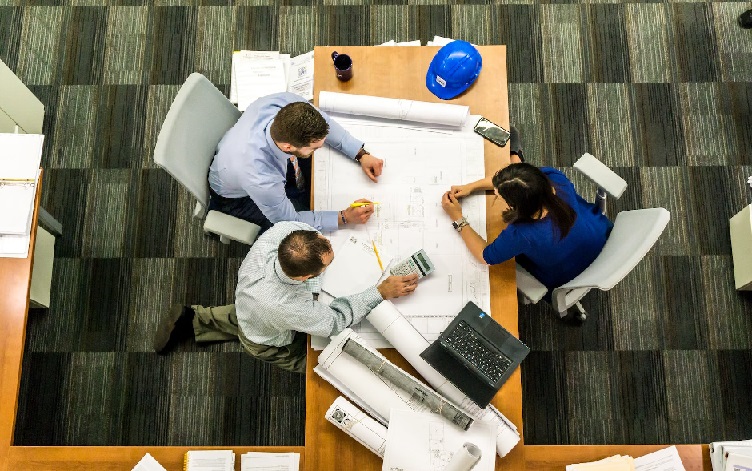
The construction sector buzzes with the sounds of progress and productivity. Yet amidst the steel frames and concrete lies a persistent threat — the risk of accidents. The significance of maintaining robust safety standards is clear. Safety is about prevention, education, and continuous improvement — the foundations for a culture that values life and limb above all else.
The Significance of Construction Site Safety
Why is safety so critical on construction sites? The reasons extend far beyond avoiding legal repercussions or financial losses from work disruptions. From a human perspective, every construction accident is one too many — often resulting in long-term disability or even fatality. Additionally, accidents can lead to significant economic consequences, including elevated insurance premiums, compensation payouts, and loss of productivity. With this, an Omaha construction accident lawyer is a resource rather than a necessity. Thus, the ripple effects of site safety, or the lack thereof, are profound and far-reaching.
Common Causes of Construction Accidents
Despite stringent safety regulations, construction sites are plagued by accidents, often with devastating outcomes. Common culprits include falls from heights, electrocution, being struck by heavy machinery, and getting caught between objects. Factors such as human error, inadequate training, and failure to adhere to safety guidelines are often to blame. By addressing these root causes, companies can design more effective safety measures and training programs. In analyzing recent incidents and trends, the construction industry can learn from past mistakes to formulate better preventative strategies. The Occupational Safety and Health Administration (OSHA) offers detailed statistics and study results that shed light on how these accidents can be avoided, both for the safety of employees and the longevity of the businesses they serve.
The Role of Personal Protective Equipment (PPE)
In the hierarchy of hazard controls, Personal Protective Equipment (PPE) may not be the first line of defense. Still, its role in worker safety is undeniable. PPE acts as the last barrier between a worker and potential hazards. From hard hats protecting against head injuries to high-visibility vests ensuring workers are seen in low-light conditions, PPE is an essential element of a comprehensive safety program. Encouraging and enforcing its usage can prevent numerous injuries and save lives.
Safety Training for Construction Workers
Construction safety training is pivotal in fostering a safety culture and awareness on the job site. Workers with the knowledge and skills to recognize and avoid hazards are less likely to be injured on the job. As technologies and methods evolve, so should the training programs, which must address the latest risks and provide instruction on current best practices. Moreover, employee engagement in these training programs is crucial — workers who feel involved and heard are likelier to adhere to safety practices and report potential issues.
Implementing Strict Safety Protocols Within Work Zones
Construction sites are dynamic environments where risks change daily, if not hourly. Implementing and maintaining strict safety protocols is essential in creating order and predictability amidst this ever-changing backdrop. Safety measures like clear signage, well-demarcated pedestrian pathways, and securely assembled scaffolding are more than preventive—they actively prevent accidents and ensure uninterrupted workflow. The ongoing vigilance in these efforts can turn a potentially hazardous job site into a controlled space conducive to safe work.
The Impact of Technology on Construction Site Safety
The advent of technology has a singular impact on enhancing construction safety like in Omaha. Innovations like drone technology for site surveys, wearable devices for monitoring workers’ health and environmental conditions, and safety management software for training and compliance are changing the game. Such technologies enable a proactive approach to hazard identification and ensure swift emergency response. By harnessing the power of data and interconnected devices, the industry is advancing toward a future where accidents are substantially reduced.
Reporting and Investigating Accidents: Steps to Continuous Improvement
Despite best efforts and interventions, accidents can still occur. The key to transformation in safety lies in how these incidents are reported and investigated. A transparent accident reporting process encourages prompt disclosure, vital for immediate response and longer-term preventative measures. Investigations should be thorough, impartial, and aimed at discovering root causes rather than assigning blame. By learning from each incident, construction firms can adapt and fortify their safety policies to avoid repeat occurrences. This process of reflection and action is critical for a continuous improvement loop that benefits all stakeholders.
Legal Protections for Construction Workers: Understanding Your Rights
Understanding legal rights is crucial for construction workers who face injury on the job. The law provides protections — from workers’ compensation to safe working conditions — to ensure fair treatment for those injured. With legal landscapes frequently shifting, workers need to be knowledgeable about the latest regulations and protections afforded to them. Resources such as the National Safety Council (NSC) provide valuable information about worker rights and safety practices, offering guidance for navigating the aftermath of workplace accidents. Empowering workers with legal knowledge safeguards their interests and aligns with the overarching goal of raising industry safety standards.






